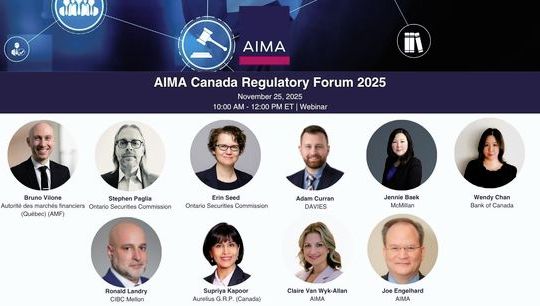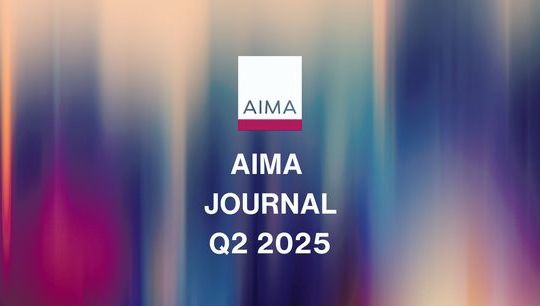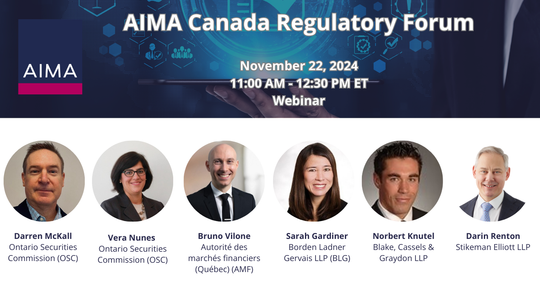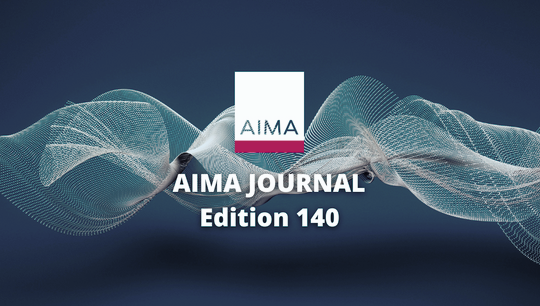Building a European Capital Markets Union – a five year plan
By Michael Dakin, Partner, Simon Gleeson, Partner, Kevin Ingram, Partner, Philip Souta, Partner, and Jacqueline Jones, Senior Professional Support Lawyer, Clifford Chance
Published: 30 June 2015
The European Commission has unveiled its plan to boost funding and growth across Europe by the creation of a Capital Markets Union – a single market for capital across the 28 EU member states.
The Green Paper on ‘Building a Capital Markets Union’ was issued on 18 February 2015, to stimulate debate on the measures needed to achieve the Commission's 'top priority of jobs and growth', by removing the many obstacles to deep and integrated capital markets. Two technical consultations, on 'simple, standard and transparent' securitisation and the Prospectus Directive, were launched alongside the Green Paper. The closing date for all was 13 May 2015. Based on the feedback received, the Commission will adopt an action plan later in 2015, which will set out the actions to be carried out over the next five years.
This article highlights the main aspects of the Green Paper. Our response to the Green Paper can be found here.
The arguments for Capital Markets Union
The Commission argues that Capital Markets Union is needed to diversify sources of finance, strengthen cross-border capital flows and improve access to finance for businesses and infrastructure projects across Europe, so as to reduce the cost of raising capital, particularly for SMEs, and lessen Europe's heavy dependence on bank funding.
Building a Capital Markets Union, block by block
In seeking to build a Capital Markets Union, the Commission has three broad objectives:
- To improve access to finance for all businesses and infrastructure projects across Europe
- To increase and diversify sources of funding
- To 'make markets work more effectively'
Recognising that achieving Capital Markets Union is a long-term project, with significant obstacles to overcome, the Commission aims to put in place the 'building blocks' by 2019. No single measure will achieve these ambitious objectives and, indeed, it might not necessarily mean more legislative measures. Recognising the need to reduce burdensome legislation, the Green Paper confirms that more legislation might not always be the most appropriate policy response and that non-legislative steps and the enforcement of existing regulations might be the best way forward.
Nevertheless, despite the long-term nature of the project, there are some areas where progress could, so the Commission believes, be made in the short term and the Green Paper outlines five priority actions, some of which were also identified in the Investment Plan for Europe which was published in November 2014. These are: (i) lowering barriers to accessing capital markets through a review of the current prospectus regime; (ii) widening the investor base for SMEs by improving credit information; (iii) developing proposals to encourage simple, standard and transparent securitisation; (iv) supporting take-up of European long-term investment funds (ELTIFs) and (v) supporting industry-led work to develop European private placement markets.
|
Priority Actions |
|
Lowering barriers to accessing capital markets The Commission is reviewing the current prospectus regime through a separate public consultation launched in parallel to the Green Paper. The aim is to make it easier for companies (including SMEs) to raise capital throughout the EU and to boost the take-up of SME Growth Markets. The review will look at when a prospectus is required, streamlining the approval process, and simplifying the information included in prospectuses. Widening the investor base for SMEs Improving credit information (e.g. by developing a common, minimum set of comparable information for credit reporting and assessment) would, it is argued, help SMEs access capital markets. The Commission plans to hold workshops on SME credit information in 2015 to progress this. The Green Paper seeks views on what further steps around the availability and standardisation of SME credit information could support a deeper market in SME and start-up finance and a wider investor base. Building sustainable securitisation A 'qualifying' securitisation market, relying on simple, transparent and standardised securitisation instruments, could bridge banks and capital markets. The Commission is consulting on specific measures to meet these objectives in parallel with the Green Paper. Boosting long-term investment The recently finalised European Long-Term Investment Funds (ELTIFs) regulatory framework is expected to allow investors to put money into companies and infrastructure projects for the long-term. ELTIFs should have particular appeal to investors such as insurance companies or pension funds which need steady income streams or long-term capital growth. The Green Paper seeks views on what further role the Commission and member states could play in supporting the take-up of ELTIFs. Developing European private placement markets A consortium of industry bodies has established a market guide on common market practices, principles and standardised documentation for privateplacements, compatible with a diversity of legal frameworks. The Commission welcomes this market-led approach, which could help to facilitate the creation of a European private placement market in the short term. The Green Paper seeks views on whether any action by the EU is needed to support the development of private placement markets other than supporting market-led efforts to agree common standards. |
Overcoming the barriers to Capital Markets Union
The Green Paper discusses some of the barriers impeding fulfilling the objectives of Capital Markets Union and seeks feedback on how these barriers might be overcome in the medium to long-term.
Objective 1 – improving access to finance
One of the key objectives of Capital Markets Union is to improve access to finance for all businesses and investment projects across Europe. In the belief that well-functioning equity and bond markets are crucial to achieving this objective, the Green Paper discusses some of the barriers that have impeded access to capital markets, such as insufficient credit information on SMEs, the cost of accessing public capital markets (e.g. the cost of preparing a prospectus, due diligence and other regulatory requirements) 'short termism' on the part of investors and regulatory barriers which are common in new infrastructure investment.
Information problems
Ways are suggested to improve the 'information problems' faced by SMEs. Some of these appear relatively simple, such as banks being encouraged to provide better feedback for SMEs whose credit applications are declined and to raise awareness of the alternative sources of funding that might be available.
Another suggestion is to develop a simplified, common accounting standard, tailored to the companies listed on certain trading venues such as multilateral trading facilities (MTFs). It is suggested that this could assist transparency and comparability, and become a feature of SME Growth Markets, and also be available for wider use.
For investment projects, the Commission believes that improved transparency would increase their attractiveness to investors and assist regulators in adopting a more tailored prudential regime for infrastructure investment. To this end it has proposed the creation of a European Investment Project Pipeline, with a dedicated website and common standards for presentation of information on the project.
'Standardisation'
Establishing common standards in some markets – a common set of market rules, transparency on product features and consistent supervision and enforcement – is suggested as a way to attract more investors and increase market depth and liquidity. For example, greater standardisation of corporate debt issuances could allow for a more liquid secondary market for corporate bonds to develop. Feedback is sought on whether the possibility of developing a more standardised corporate debt market should be explored further, and whether this can best be achieved by a market-led initiative or regulatory intervention.
Continuing the theme of standardisation, the European covered bond market is to receive specific focus. The Commission will consult in 2015 on the merits and potential shape of an EU covered bond framework and will present policy options to achieve greater integration in covered bond markets, based on experience gained from well-functioning national frameworks.
|
Capital Markets Union and Banks |
|
Although one of the principal aims of Capital Markets Union is to diversify sources of finance to include non-bank sources of funding, the Commission sees banks as benefitting from Capital Markets Union. As banks are lenders to a significant proportion of the economy and act as intermediaries in capital markets, it is said they would benefit from a deeper, more integrated market, with fewer barriers and the prospect of more national and cross-border business. In addition, the Commission believes that measures such as a framework for 'simple, standard and transparent' securitisations could provide scope for banks to lend more where they transfer risks 'safely off their balance sheets'. |
The Commission will also consider whether investors should be provided with more information about the collateral underlying covered bonds and other structured debt, similar to loan data disclosure requirements on structured finance instruments.
Alternative finance
Specific mention is made in the Green Paper of peer-to-peer lending and crowdfunding. As a follow-up to its Communication on Crowdfunding, the Commission is gathering information on industry approaches to information disclosure and member state approaches to regulation.
The preliminary results suggest that the diverse national approaches in these areas may encourage crowdfunding activity locally, but may not necessarily be compatible with each other in a cross-border context. Feedback is sought on whether there are barriers to the development of appropriately regulated crowdfunding or peer-to-peer platforms, including on a cross border basis and, if so, how should they be addressed.
Objective 2 – developing and diversifying the supply of funding
The second major objective of the Capital Markets Union project is to attract more institutional, retail and international investors, so as to maximise and diversify the supply of funding.
Boosting institutional investment
The Green Paper acknowledges the important role to be played by institutional investors – asset managers, pension funds and insurance companies, private equity and venture capital funds – in achieving Capital Markets Union and discusses some of the barriers that might be impeding investment from these sectors.
|
Capital Markets Union is not the same as Banking Union |
|
The main objective of the Banking Union is to break the link between banks and national finances for the member states that share the euro. The Single Supervisory Mechanism gives the ECB responsibility for supervision over banks in the euro area, while the Single Resolution Mechanism ensures that when euro area banks fail, resolution would be managed through a Single Resolution Board and a Single Resolution Fund. In contrast to the Banking Union, Capital Markets Union is a project for all 28 EU member states and the objective is to diversify Europe's sources of finance to encompass non-bank funding (e.g. from insurance companies, pension funds, hedge funds and other asset managers). However, the Commission sees Capital Markets Union and Banking Union as complementary projects. Capital Markets Union will build on the foundations of financial stability promoted by Banking Union and well-integrated capital markets will contribute to the resilience of the Economic and Monetary Union. |
For asset managers, one such barrier is the regulatory cost of setting up funds, becoming authorised managers and selling across borders. This has become evident, for example, in the recent implementation of the AIFMD. These costs currently vary across member states and reducing these costs, it is said, would lower barriers to entry and encourage competition. Besides reducing costs, the Green Paper seeks views on what further policy measures might incentivise institutional investors – who are seen as pivotal to the success of Capital Markets Union – to invest more in a broader range of assets, such as start-ups, long-term projects and SMEs.
The pensions and insurance sectors are also noted as playing a key role. Recent developments, such as the implementation of Solvency II from 1 January 2016, which will allow insurance companies to invest more in long-term assets by removing national restrictions on the composition of their asset portfolio, it is expected, should help boost investment from the insurance sector. In response to calls for tailored treatment for infrastructure investments, the Green Paper seeks views on whether this should be included in future reviews of Solvency II and CRD IV/CRR. On the pensions front, the Green Paper considers whether the introduction of a standardised personal pension product across the EU, or removing barriers to cross-border access, would strengthen the single market in pension provision.
Private equity and venture capital funds are noted as providing valuable sources of funding, although there is wide geographic variation – 90% of all venture capital fund managers are concentrated in the UK, Germany, Sweden, Denmark, Finland, The Netherlands, France and Spain.
However, significant barriers, such as the absence of an equity investment culture, lack of information, a fragmented market and high costs mean that such markets often lack scale. The Green Paper seeks views on whether changes are needed to the recently introduced EuVECA (European Venture Capital Funds Regulation) and EuSEF (European Social Entrepreneurship Fund) Regulations and, more generally, how private equity and venture capital might be further developed as alternative sources of finance.
Acknowledging the impact of new technology and business models, the Commission seeks views on whether there are any significant barriers to entry for bank and non-bank direct lenders who often provide funding to start-ups and SMEs.
Boosting retail investment
Noting that retail investors' appetite for investing directly in capital markets is small across the EU, the Green Paper explores ways in which this might be encouraged. These include seeking views on how cross-border retail participation in UCITS could be increased and what other policy measures might be introduced to increase retail investment.
Acknowledging that increased retail investment can only be achieved if investors believe their money to be safe, and the increased investor protection measures already introduced under MiFID 2, the Commission seeks views on how the European Supervisory Authorities can further contribute to ensuring consumer and investor protection.
Attracting international investment
Acknowledging that capital markets are global, Capital Markets Union is to be developed in the wider, global context. The Commission is keen that direct marketing of EU investment funds and other investment products in third countries should be facilitated and seeks views on measures that can be taken to achieve this, e.g. by reducing barriers for EU financial institutions accessing third country markets and opening markets for cross-border asset management in future trade agreements. Similarly, views are sought on measures that could be taken to increase the attractiveness of EU markets to international investors.
Objective 3 – improving market effectiveness
The third major objective is to improve the effectiveness of the market by removing some of the barriers that might impede cross-border flows of capital. This is an extremely broad objective and the barriers are diverse, covering areas of company, insolvency and securities laws and diverging tax treatments. The Commission acknowledges that tackling these issues will not be easy, and that 'further analysis is needed to identify the scale of the challenge in each area and the appropriate solutions and degree of prioritisation'.
Single rulebook
The single rulebook, developed over recent years through a number of key reforms, such as the legislation on markets in financial instruments (MiFID 2), market abuse (MAR/MAD), Alternative Investment Fund Managers (AIFMD), European market infrastructure (EMIR) and central securities depositories (CSDR) is seen as a major step forward, by creating a harmonised regulatory framework for European capital markets. However, it is noted that 'gold-plating' and divergent interpretation of the rules at national level has arisen and the Commission states that it will work with member states and the ESAs to ensure that financial regulation is correctly implemented and enforced.
Competition and barriers to entry
To support more efficient and well-functioning capital markets, the Commission believes that entry barriers should be removed where possible and access to financial market infrastructure assured. To this end, the Commission says it will continue to ensure that competition law is rigorously applied to avoid restrictions or distortions of competition. This applies to barriers within the EU as well as with third countries. As an example, the Commission states that requirements imposed by host member states on firms operating cross-border with a European marketing passport could, in some cases, constitute an unjustified barrier to the free movement of capital.
Supervisory convergence
The Commission will review the functioning and operation of the ESAs with a view to improving regulatory convergence, seen as vital to establishing harmonised regulatory frameworks for capital markets. The ESAs may be given additional powers if national regulatory regimes result in differing levels of investor protection, barriers to cross-border operation being erected or companies being 'discouraged' from seeking finance in other member states. The Green Paper seeks views on whether the ESAs' current powers to ensure consistent supervision are sufficient, or whether additional powers are needed.
Data and reporting
Continuing the theme of increased transparency, a feature of regulatory reforms post financial crisis, the Green Paper discusses how the development of common data and reporting across the EU would assist Capital Markets Union. Development of a 'consolidated tape' for equity markets is singled out as an example. This has been the subject of much debate in the context of MiFID 2. The Green Paper makes clear that if market-led efforts fail to deliver a consolidated tape which is easily accessible to market participants on a reasonable commercial basis, other options may be considered, including 'entrusting the operation of a consolidated tape to a commercial entity' and the Commission will also take steps to ensure that the dissemination of consolidated information on commercially reasonable terms is unhindered.
Market infrastructure, collateral and securities law
The Green Paper refers to work that has already been done to develop the regulatory framework applying to market infrastructures, for example, the recent legislation relating to central counterparties, central securities depositaries and the Target2Securities project. However, it notes certain areas where there may be potential to make improvements, one of which is to 'collateral' because, it is believed, the fluidity of collateral in the EU is currently restricted. Acknowledging the increased demand for collateral, driven by both an increase in secured funding and regulatory requirements (e.g. under EMIR and CRR) the Green Paper warns of the risk of collateral re-use and refers to work that is currently underway internationally to examine these issues. The Green Paper seeks views on whether steps should be undertaken to facilitate an appropriately regulated flow of collateral throughout the EU and whether work should be undertaken to improve the legal enforceability of collateral and close-out netting arrangements cross-border.
Returning to an issue that has been discussed for many years, the Green Paper queries whether, 'taking into account past experiences', changes should be made to the laws relating to securities ownership, noting that legislation relating to investors' rights in securities differs across member states, making it difficult for investors to compare and assess the risks inherent to their investment. That this is a complex area is made clear. The Green Paper seeks views on whether, given these complexities, targeted changes to securities ownership rules that could materially contribute to more integrated capital markets are feasible.
In one specific area, namely achieving greater legal certainty in cross-border transfer of claims and their order of priority, the Commission plans to issue a report in 2015. The report will examine the problems and possible solutions in this area which, it is hoped, will help develop a pan-European market in securitisation and financial collateral arrangements and also assist other activities, such as factoring.
Company law and corporate governance
Views are sought on the obstacles arising from company law and how these might be overcome. Several are discussed in the Green Paper, including some relating to corporate governance, protection of minority shareholders, cross-border mobility and restructurings and divergent national conflict-of-laws rules.
Although the revision of the Shareholder Rights Directive aims to encourage institutional investors and asset managers to provide more long-term capital to companies, the Commission believes that more could be done in the area of corporate governance, which is often governed by domestic (rather than European) law and standards. Likewise, it believes that further reforms to company law might be helpful in overcoming barriers to cross-border establishment and operation of companies.
Insolvency
The Green Paper notes that the discussion around harmonising insolvency legislation has been slow over the past 30 years due to the complexity of the issues involved, although there has been progress on conflict-of-laws rules for cross-border insolvency proceedings. Nevertheless, the Commission believes that this is an area worth revisiting as reducing divergences in national insolvency frameworks could contribute to the emergence of a pan-European equity and debt market by reducing uncertainty for investors.
|
Capital Markets Union and Shadow Banking |
|
The Commission aims to deliver transparent and resilient market-based finance while minimising systemic risks to the financial system. The intention, as stated in the Green Paper, is not to 'back pedal' on reforms introduced to tackle risks in the shadow banking sector. The Commission will continue to monitor these risks, while enabling the economy to benefit from a more diverse range of funding. |
In 2014, the Commission adopted a Recommendation on a new approach to business failure in which it urges member states to put in place early restructuring procedures and 'second chance' provisions and to consider applying the principles to consumer over-indebtedness and bankruptcy. An evaluation of the Recommendation is planned for 2015.
Taxation
The Green Paper seeks views on the barriers around taxation that should be examined as a priority. A number of barriers are discussed in the Green Paper, including obstacles to cross-border investments such as pensions and life assurance products, due to distortions caused by different tax regimes across member states (e.g. to different types of market participants and to different types of financings). The effective use of incentives, such as R&D expenditure for innovative companies, is also discussed.
Technology
The Green Paper notes that European and national company law has not kept pace with technological developments and that use of modern technology, e.g. electronic voting for shareholders and European-wide on-line registration of companies, could help reduce costs, ease administrative burdens and make cross-border communication more efficient.
|
Next Steps |
|
Reponses to the Green Paper and to the consultations on Securitisation and the Prospectus Directive must be received by 13 May 2015. A conference will be organised for the summer of 2015 and, taking into account the feedback to the consultations, the Commission will launch a Capital Markets Action Plan later in 2015. In addition, work on a number of other initiatives relating to various aspects of the Capital Markets Union project is scheduled to take place in 2015.
The target is to have the 'building blocks' of Capital Markets Union in place by 2019.
|
Also on this topic:
Capital Markets Union – Securities Law Reform: Necessary or not?
www.cliffordchance.com







